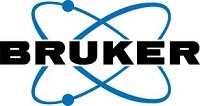Nanoscale FTIR spectra can be obtained within seconds using a proprietary Anasys Instruments technology. With FASTspectra laser technology, Resonance Enhanced AFM-IR is extended to a broader spectroscopic range including the N-H stretch, C-H stretch and OH regions.
-1.jpg)
As a result, new standards of sensitivity and resolution have been set for a wide range of applications, while still providing unmatched, direct correlation to FTIR at the nanoscale.
Tapping AFM-IR
<10 nm chemical imaging
The new patent-pending Tapping AFM-IR imaging technique from Anasys Instruments generates chemical mapping of the highest spatial resolution together with high imaging speeds.
Whether users want to create chemical composition maps of their polymers or to image the thinnest, smallest multilayer films or contaminants, consistent, high resolution chemical imaging can be easily and rapidly obtained using this technique.
-1.jpg)
IR line profile shows <10nm chemical spatial resolution using Tapping AFM-IR mode on thin biological samples.
Highest Spatial Resolution and Monolayer Sensitivity
Anasys' proprietary Tapping AFM-IR and FASTspectra sets new standards in resolution and sensitivity achieving up to 10 nm spatial resolution and monolayer sensitivity.
Fully Featured AFM Nanoscale Material Property Mapping
An integrated, fully featured AFM offers unique material property mapping capabilities with thermal, mechanical and electrical modes to support unique multi-modal characterization of a wide range of materials science and life science applications.
POINTspectra Imaging and Spectroscopy
The nanoIR2-FS also provides IR based chemical imaging to provide mapping of chemical variations of the feature of interest. Unique POINTspectra feature provides both point spectroscopy and chemical imaging with a single laser source enabling faster time to data and a cost effective solution.

 Download the Brochure for More Information
Download the Brochure for More Information

This information has been sourced, reviewed and adapted from materials provided by Bruker Nano Surfaces. For more information on this source, please visit Bruker Nano Surfaces.